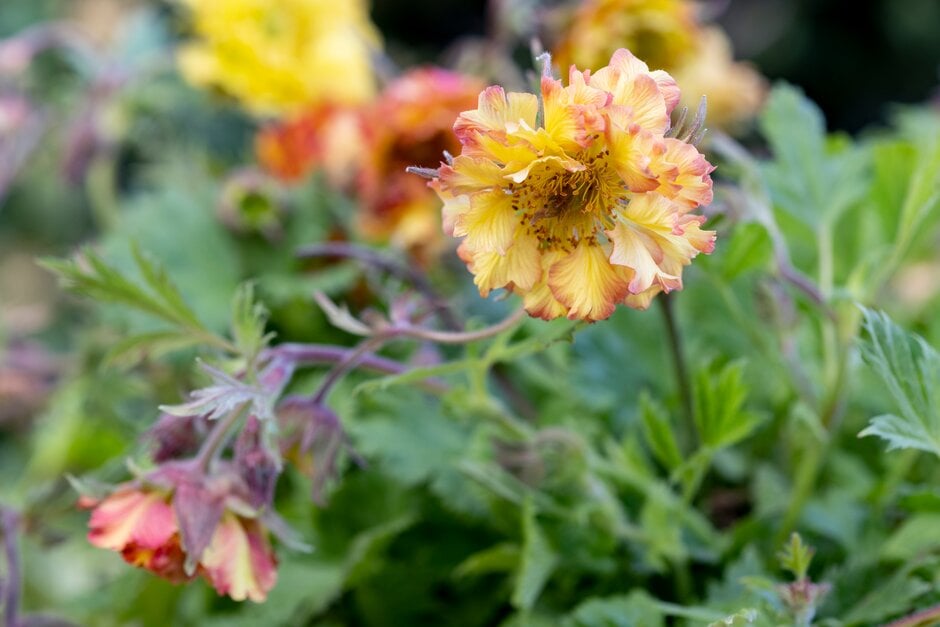Geum 'Can-can' (d)
avens 'Can-can'
A compact, clump-forming perennial to around 40cm high with hairy, lobed and toothed, semi-evergreen foliage. Slender stems bear double flowers with ruffled yellow petals suffused with orange from late spring into summer
Size
Ultimate height
0.1–0.5 metresTime to ultimate height
2–5 yearsUltimate spread
0.1–0.5 metresGrowing conditions
Moisture
Moist but well–drained, Well–drainedpH
Acid, Alkaline, NeutralColour & scent
| Stem | Flower | Foliage | Fruit | |
| Spring | Yellow Orange | Green | ||
|---|---|---|---|---|
| Summer | Yellow Orange | Green | ||
| Autumn | Green | |||
| Winter | Green |
Position
- Full sun
- Partial shade
Aspect
East–facing or South–facing or West–facing
Exposure
Exposed or Sheltered Hardiness
H7Botanical details
- Family
- Rosaceae
- Native to GB / Ireland
- No
- Foliage
- Semi evergreen
- Habit
- Clump forming
- Genus
Geum are rhizomatous perennials, occasionally spreading by stolons, with a basal rosette of pinnately lobed leaves and saucer-shaped flowers in loose clusters
- Name status
Unresolved
How to grow
Cultivation
Grows best in a moist but well-drained soil, rich in organic matter, in sun or even a certain amount of shade. Divide every few years to avoid congestion
Propagation
Propagate by division in spring or autumn
Suggested planting locations and garden types
- Cottage and informal garden
- Patio and container plants
- Low Maintenance
- Flower borders and beds
- Underplanting of roses and shrubs
Pruning
Deadhead to promote more blooms, and cut back old stems after flowering
Pests
May be susceptible to leaf miners, aphids and geum sawfly larvae
Diseases
May be susceptible to powdery mildew
Get involved
The Royal Horticultural Society is the UK’s leading gardening charity. We aim to enrich everyone’s life through plants, and make the UK a greener and more beautiful place.

